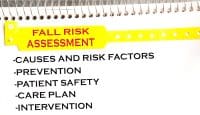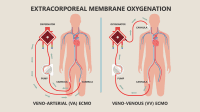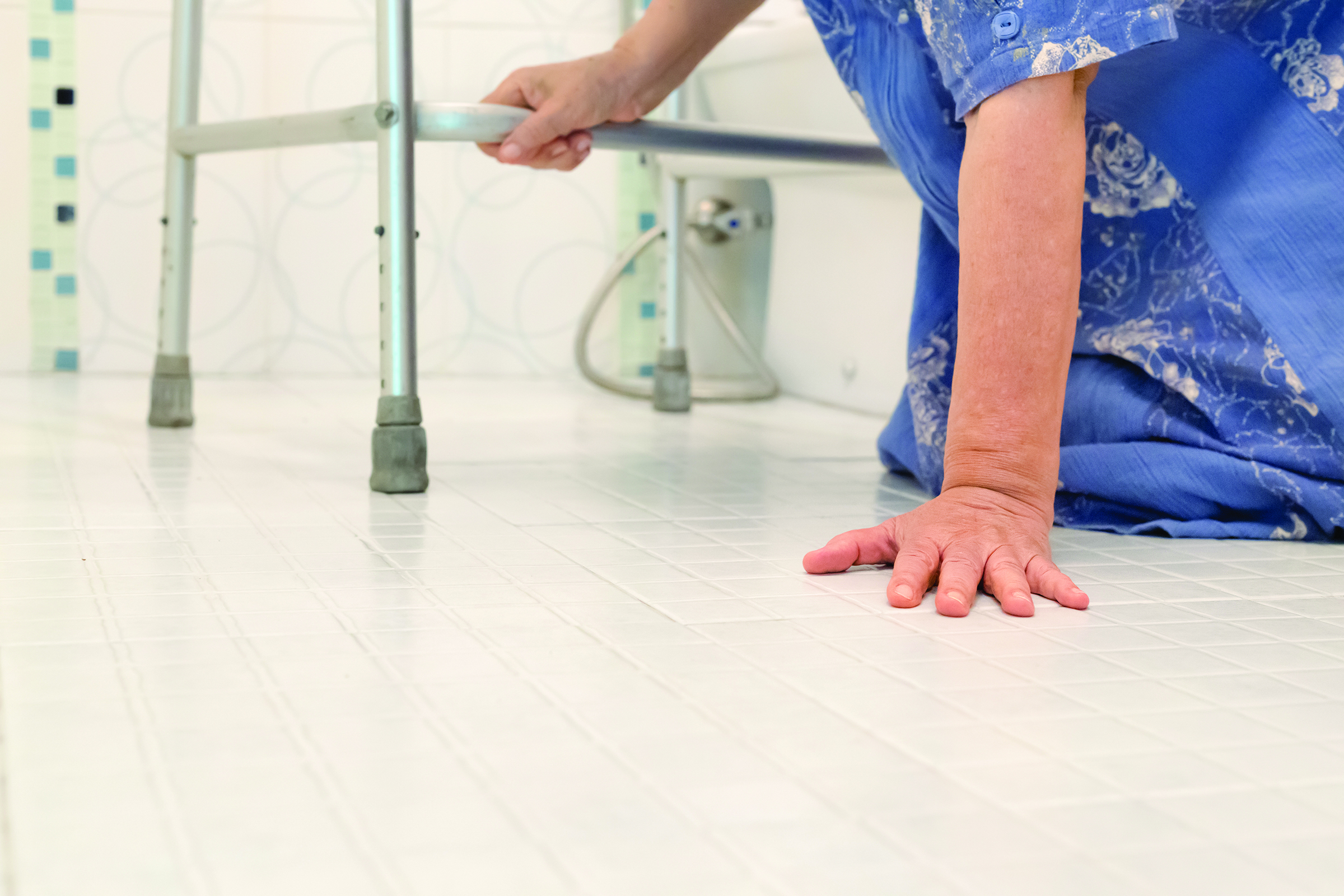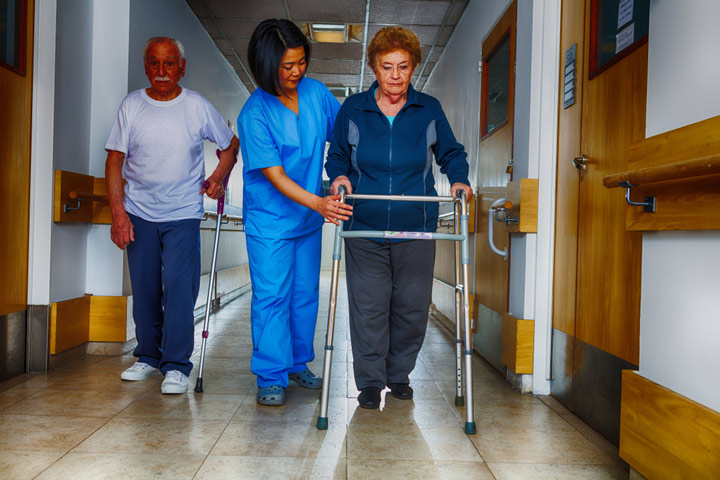Falls are a major concern for older adults in all settings, causing significant morbidity and mortality and affecting quality of life. In the hospital, falls occur at an estimated rate of 8.9 per 1,000 patient days. About 30% to 50% of these falls cause injury. Falls increase hospital stays and may necessitate a long-term stay.
According to the Centers for Disease Control and Prevention (CDC), 22,900 older people died from fall-related injuries in 2011. Falls also are linked to depression, anxiety, and fear of falling. In persons who’ve fallen, the risk of falling again rises significantly. Obviously, we must put effective measures into place to prevent falls.
The literature on falls prevention is abundant, and many fall-risk assessment instruments exit. Clinical practice guidelines on reducing falls recommend a multicomponent strategy that addresses functional, physical, psychological, and educational aspects of falling, individualized to each patient. Locating and reviewing these guidelines is easy, but integrating them into practice and individualizing them for each patient can prove challenging.
Efforts to improve falls prevention require a systemic approach that involves organizational change. Falls prevention should be part of an organizational culture of evidence-based practice (EBP). EBP entails integration of clinical expertise, patient values, and the best research evidence into the decision-making process for patient care. An essential component of professional nursing practice, EPB is also a critical component of the Magnet Recognition® and Pathway to Excellence® programs of the American Nurses Credentialing Center.
Using an appropriate EBP model
Multiple models or frameworks can be used to implement EBP. The Iowa Model of Evidence-Based Practice is a trusted model that’s easy to understand and use. It takes a systematic approach to analyzing a problem and gathering research to identify reasonable actions to address it, followed by practice changes to reduce recurrence of the problem, with subsequent critique and continued monitoring to sustain desired outcomes. This model can be used to develop an interdisciplinary plan to reduce falls in clinical settings.
After identifying the problem (such as a high number of falls, falls with injuries, or failure to reduce falls using current interventions), interdisciplinary staff from one or more units can gather the most recent falls-related literature in all fields and evaluate its suggested use in the practice setting. After this literature review and critique, the team develops a set of actions and pilots a project using fall-risk assessment and prevention actions identified in the literature that match the units’ populations and settings. After a suitable interval, the interdisciplinary team evaluates desired outcomes of the EBP project. Based on results, changes to practice are introduced throughout the organization.
Two EBP falls-prevention projects
The EBP projects discussed below illustrate how organizations can integrate falls prevention into a culture of EBP.
Community hospital’s med-surg unit
A med-surg unit of a suburban community hospital already had an active and effective falls-prevention program in place, with fall rates below national benchmarks. But hospital leaders wanted to reduce rates even further. The EBP project used clinical practice guidelines from the American Geriatrics Society and British Geriatrics Society, which recommend a multicomponent strategy addressing functional, physical, and psychological aspects of falling, tailored to patients’ individual needs.
Clinicians partnered with the patient and engaged the patient’s active participation in the falls prevention program. This multicomponent patient-engagement strategy included a safety agreement on admission and a group-walk initiative throughout the hospital stay, aimed at motivating patient participation. The safety agreement addressed patient concerns and fall-risk education; patients were asked to sign it, further encouraging their active participation. The initiative included three 6-meter group walks daily at a self-set pace.
Since program inception, falls on this unit have decreased approximately 25% and patients’ mobility has increased; no fall-related injuries have occurred. About 75% of patients participate in daily walks.
Academic medical center’s rehab unit
The unit’s interdisciplinary team was concerned about the number of fall-related patient injuries, but wanted to stay true to the goals of the rehab unit—helping patients regain their prehospitalization functional level and reducing overall functional impairment. As part of its EBP, the team analyzed the rehabilitation and geriatric literature for solutions related to falls prevention.
Their work led the team to develop a 1-page educational tool that targeted patients deemed unlikely to ask for help ambulating. These patients and their family members were asked to sign an agreement inviting patients to call for help when they needed to get out of bed, go to the bathroom in a hurry, reach for objects while sitting or lying in bed, or using assistive equipment. In return, staff promised to make rounds every 30 minutes to anticipate patients’ needs and to answer requests for assistance immediately. Staff were empowered to use the agreement to teach patients and families about safety. The staff-patient partnership and individualization of care have led to a significant reduction in falls with injuries on this unit.
EBP promotes positive outcomes
Outcomes achieved with both projects demonstrate that combining specific actions in an interdisciplinary environment can reduce falls and fall-related injuries. Both units continue to work within their organizations to roll their successes forward to other units, following the pattern of the Iowa Model. These initiatives illustrate how an EBP model can improve patient safety and the patient experience.
Sharon Stahl Wexler is an associate professor at Pace University College of Health Professions, Lienhard School of Nursing, in New York, NY. Catherine O’Neill D’Amico is the director of Education, Research, and Magnet Project at Mt. Sinai Beth Israel’s Beatrice Renfield Division of Nursing Education and Research in New York, NY.
Selected references
Association of Rehabilitation Nurses. The Specialty Practice of Rehabilitation Nursing: A Core Curriculum. 6th ed. Glenview, IL: Association of Rehabilitation Nurses; 2015.
Centers for Disease Control and Prevention. Falls among older adults: An overview. Last updated March 19, 2015. www.cdc.gov/HomeandRecreationalSafety/Falls/adultfalls.html.
Hill AM, Etherton-Beer C, Haines TP. Tailored education for older patients to facilitate engagement in falls prevention strategies after hospital discharge—a pilot randomized controlled trial. PLoS ONE. 2013;8(5):1-11.
Panel on Prevention of Falls in Older Persons, American Geriatrics Society and British Geriatrics Society. Summary of the Updated American Geriatrics Society/British Geriatrics Society clinical practice guideline for prevention of falls in older persons. J Am Geriatr Soc. 2011;59(1):148-57.
Titler MG, Kleiber C, Steelman VJ, et al. The Iowa model of evidence-based practice to promote quality care. Crit Care Nurs Clin North Am. 2001;13(4):497-509.
Zavotsky K, Hussey J, Easter K, Incalcaterra E. Fall safety agreement: a new twist on education in the hospitalized older adult. Clin Nurse Spec. 2014;28(3):168-72.


















